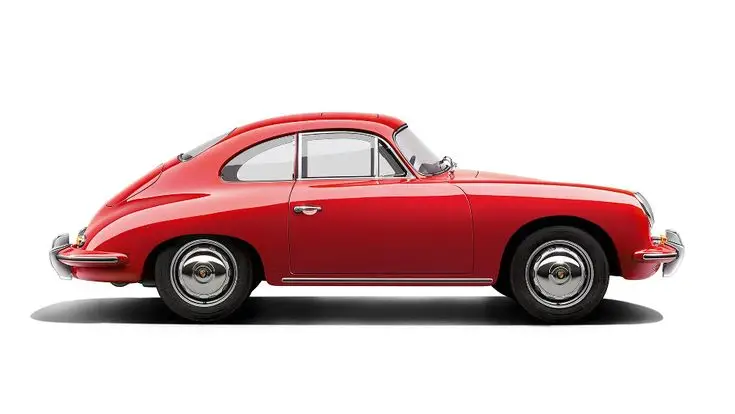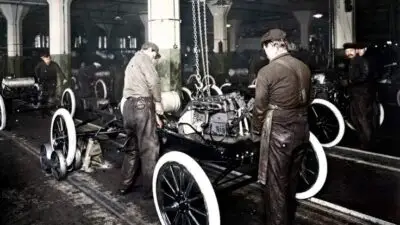Cars have changed dramatically over the years, reflecting both technological advances and cultural shifts. From the sleek curves of 1950s American classics to the boxy shapes of 1980s vehicles, each decade brought distinct design elements that car enthusiasts can spot immediately. Each era’s automotive designs tell a story about that time period’s values, available technology, and cultural attitudes.

The evolution of car design isn’t just about looks—it’s about function too. The iconic style that defined 1950s America with its dramatic fins and chrome accents gave way to the muscle cars of the 1960s and the fuel-efficient models of the 1970s oil crisis. These shifts show how car makers responded to changing consumer needs and global events.
Looking at how car designs changed throughout the decades reveals the fascinating relationship between form and function. What once seemed futuristic eventually becomes vintage, and yesterday’s radical design choices become today’s classic styling cues.
Key Takeaways
- Car designs reflect both technological capabilities and cultural values of their respective eras.
- Design elements like tail fins, grilles, and body shapes serve as visual timestamps that identify vehicles from specific decades.
- Automotive styling evolves in response to practical concerns such as fuel efficiency, safety regulations, and manufacturing techniques.
The Birth of Automotive Design

Early cars were primarily engineering exercises with little thought given to aesthetics. As automobiles evolved from curiosities to mainstream transportation, designers began considering how form could complement function in these revolutionary machines.
Pioneering Years and the Early Silhouettes
The first automobiles of the 1880s and 1890s barely resembled modern cars. They looked more like horseless carriages, with tall, narrow bodies perched on thin wheels.

Karl Benz’s Patent-Motorwagen from 1886 featured an exposed engine and spindly framework with no bodywork to speak of. It prioritized mechanical function over any design considerations.

By the early 1900s, cars began adopting more recognizable shapes. The 1908 Ford Model T introduced a standardized design with a front-mounted engine, enclosed passenger compartment, and practical layout that would influence automotive design for decades.
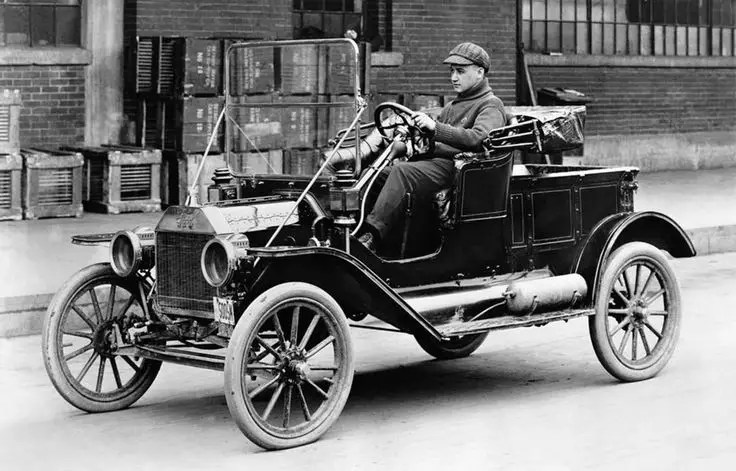
These early vehicles focused primarily on practicality. Most featured high seating positions, minimal weather protection, and exposed mechanical components—reflecting their origins as experimental machines rather than refined consumer products.
The 1920s: Flamboyance and Ornamentation
The 1920s marked automotive design’s first true flourishing. As manufacturing techniques advanced, car bodies became more sophisticated and stylistically distinct. Closed cabins replaced open designs, offering comfort and protection from the elements.
Luxury automobiles of this era displayed unprecedented ornamentation. Brands like Rolls-Royce, Packard, and Duesenberg featured highly detailed radiator grilles, elaborate hood ornaments, and chrome accents that communicated status and sophistication.
The decade introduced dramatic two-tone paint schemes and sweeping fenders that created visual flow. Wood-spoke wheels gave way to steel disc wheels with decorative patterns.
Interior design also evolved significantly. Plush upholstery, wood trim, and elaborate dashboards replaced utilitarian interiors of previous decades. This era of flamboyance demonstrated how automotive design was becoming an art form in its own right.
The 1930s: Aerodynamics and Streamlining
The 1930s brought a revolutionary shift toward aerodynamic shapes in car design. Inspired by aviation and emerging scientific understanding of wind resistance, designers created vehicles with smoother, more integrated forms.
Curved surfaces replaced angular boxes. Headlights were incorporated into fenders rather than mounted separately. Running boards became less prominent as bodies widened and lowered. These changes weren’t merely aesthetic—they improved performance and fuel efficiency.
Chrysler’s 1934 Airflow exemplified this approach with its streamlined silhouette, integrated headlights, and windshield that curved into the roof. Though commercially unsuccessful, it pioneered concepts that would eventually become standard.
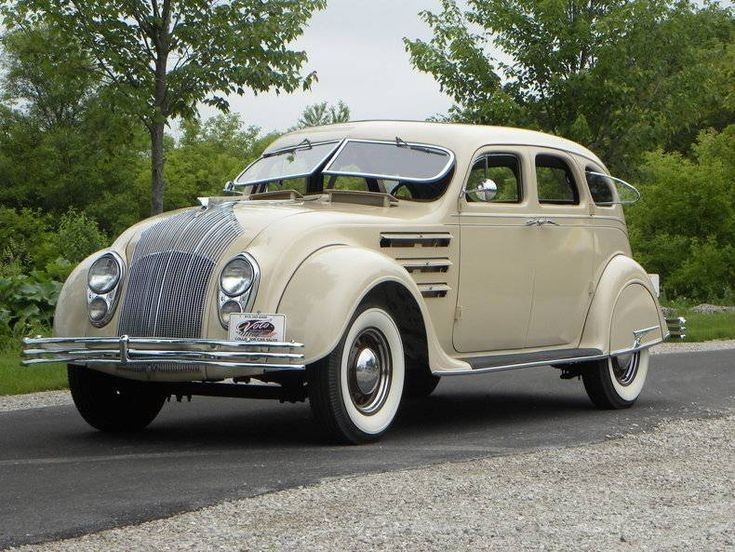
The decade also saw the rise of professional automotive design as a distinct discipline. Harley Earl at General Motors established the industry’s first dedicated styling department, recognizing that a car’s appearance had become as important as its mechanical qualities.
Post-War Period and the Rise of Modernism

The end of World War II brought dramatic shifts in car design as manufacturers transitioned from military production back to consumer vehicles. New technologies, changing consumer preferences, and economic prosperity shaped distinctive automotive aesthetics across three decades.
The 1940s: Function Over Form
The late 1940s marked a transitional period in car design history. Manufacturers primarily modified pre-war models while retooling factories for civilian production.
Cars featured rounded bodies with separate fenders and headlights. Chrome was used sparingly due to post-war material shortages. The “pontoon” styling emerged with smoother, more integrated fenders.
Popular models included the 1947 Studebaker Champion and 1948 Cadillac Series 62, which introduced modest styling innovations. The 1949 Ford revolutionized design with a slab-sided look and integrated fenders.
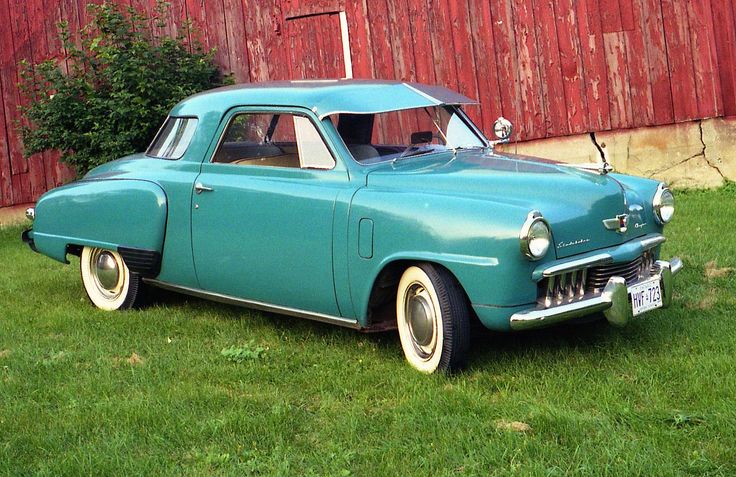

Practicality dominated as consumers sought reliable transportation after years of rationing. Colors remained conservative with blacks, navy blues, and deep greens dominating showrooms.
The 1950s: Jet Age Influence and Tailfins
The 1950s embraced exuberance and optimism through dramatic styling changes. Aerospace influences dominated as designers incorporated jet-inspired elements into everyday vehicles.
Tailfins reached their zenith with the 1959 Cadillac Eldorado sporting dramatic rear protrusions. Chrome flourished on bumpers, grilles, and trim pieces. Two-tone paint schemes became standard offerings.

Cars grew longer and lower, embracing the “Forward Look” pioneered by Chrysler designer Virgil Exner. Wraparound windshields improved visibility while adding visual flair.
The decade introduced power steering, automatic transmissions, and air conditioning as standard features in luxury models. Bright colors like Tropical Turquoise and Coral Red reflected the era’s optimistic outlook.
The 1960s: Muscle Cars and European Styling
The 1960s witnessed a split in design philosophy between powerful American muscle cars and elegant European influences. The Ford Mustang, Chevrolet Camaro, and Dodge Charger embodied American performance with long hoods and short decks.
European designs emphasized cleaner lines and aerodynamics. The Jaguar E-Type showcased flowing curves while the Porsche 911 established a timeless silhouette that continues today.


Tailfins disappeared as designers embraced cleaner profiles. Straight edges replaced curves, and rectangular shapes became more prominent.
Performance-focused features like hood scoops and racing stripes highlighted vehicular power. Interior design advanced with bucket seats, floor-mounted shifters, and driver-oriented dashboards.
Color palettes expanded dramatically with metallic finishes and vibrant hues reflecting the decade’s youthful energy and rebellious spirit.
Advancements in Automotive Design Technology

Technological innovations dramatically transformed car design processes and aesthetics from the 1970s through the 1990s. These advancements not only changed how cars looked but also influenced their performance, safety, and environmental impact.
The 1970s: Wedge Shapes and Environmental Concerns
The 1970s marked a significant shift in automotive design as the oil crisis forced designers to prioritize fuel efficiency. Sharp, angular “wedge” designs emerged as both stylistically bold and aerodynamically advantageous. Cars like the Lamborghini Countach and Lotus Esprit exemplified this radical departure from the rounded shapes of previous decades.
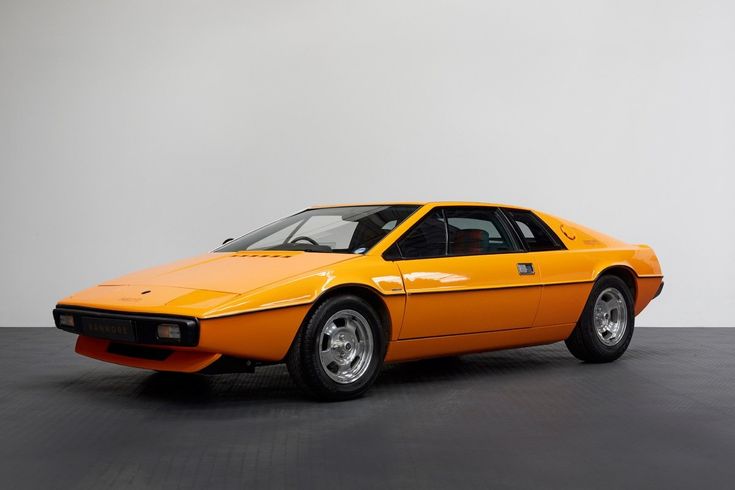
Environmental regulations also heavily influenced design decisions. Designers had to incorporate larger bumpers and safety features while maintaining visual appeal. Computer simulations for crash testing began influencing body structures.
Materials technology advanced with increased use of plastic components and early composite materials. These innovations allowed for more complex shapes while reducing weight. The evolution of car design during this era reflected both practical concerns and forward-thinking aesthetics.
The 1980s: Computer-Aided Design Revolution
The 1980s witnessed the true digital revolution in automotive design with Computer-Aided Design (CAD) systems becoming standard tools. This technology allowed designers to create more precise models and experiment with complex shapes before physical prototyping.
Wind tunnel testing became more sophisticated, leading to smoother, more aerodynamic profiles. Cars like the Ford Taurus showcased how computational fluid dynamics influenced mainstream vehicle shapes.
Digital tools enabled streamlining techniques that previously required extensive manual calculations. Engineers could now test multiple design iterations quickly and efficiently.
Manufacturing processes also evolved with robotic assembly lines allowing for more precise construction and consistent quality. This improved production capabilities paired with digital design tools created a new design language featuring smoother transitions between body panels.
The 1990s: Smoothness and the Start of Digital Influence
The 1990s ushered in an era of organic, flowing designs enabled by increasingly powerful 3D modeling software. Designers could now create complex curved surfaces that would have been difficult to conceptualize with traditional methods.
Virtual reality tools began allowing designers to experience their creations in simulated environments before production. This led to better ergonomics and interior layouts as designers could “sit” in virtual vehicles.
Material advancements continued with high-strength steel, aluminum, and more sophisticated composite materials enabling major transformations in both form and function. These lighter materials allowed for more creative freedom while meeting safety standards.
Manufacturing techniques like hydroforming enabled the production of more complex shapes. The decade saw increasingly globalized design influences, with international design studios sharing ideas and creating more universal design languages.
The New Millennium: Evolving Aesthetics and Identity

Car design entered a transformative phase after 2000, blending technological innovation with aesthetic evolution. Designers balanced nostalgic elements with futuristic features while adapting to shifting consumer values around sustainability and digital integration.
The 2000s: Retro-Futurism and Bold Statements
The 2000s marked a fascinating period in automotive design where manufacturers embraced both nostalgia and innovation. Retro-inspired vehicles like the Mini Cooper, Volkswagen New Beetle, and Ford Thunderbird captured the charm of classic models while incorporating modern technology.


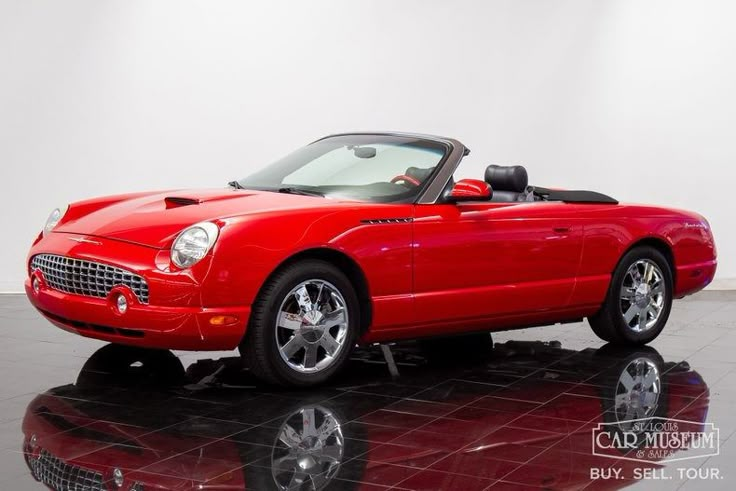
Simultaneously, bold styling emerged with aggressive lines and dramatic proportions. Brands like BMW introduced controversial elements under design chief Chris Bangle, including the distinctive “flame surfacing” technique with its complex, curved panels.
Luxury marques embraced dramatic styling cues. Audi’s signature LED daytime running lights became an instant brand identifier, while Cadillac adopted a sharp-edged “Art and Science” design language.
SUVs grew increasingly popular, influencing overall design trends with their higher ride height and commanding presence. Even small cars adopted more muscular, substantial appearances to appeal to changing consumer preferences.
The 2010s: Electrification and Connectivity
The 2010s saw car aesthetics evolve around two key innovations: electrification and digital integration. Tesla pioneered minimalist electric vehicle design with clean lines, smooth surfaces, and distinctive lighting signatures that signaled a departure from combustion-engine styling.
Interior designs underwent radical transformation. Physical buttons gave way to touchscreens and digital displays, creating cleaner, more futuristic cabin environments. Materials became more sustainable, with recycled fabrics and alternative leathers appearing in luxury vehicles.
Exterior styling evolved with aerodynamic efficiency taking priority. Sleeker profiles, active grille shutters, and flush door handles became common as manufacturers sought to maximize range and efficiency.
Brand identity strengthened through distinctive design elements. Mercedes-Benz’s “Sensual Purity” philosophy, BMW’s enlarged kidney grilles, and Lexus’s dramatic “spindle” grille all served as powerful visual signatures in an increasingly competitive market.
The 2020s and Beyond: Autonomy and Sustainability
The 2020s have introduced a new design journey centered around sustainability and autonomous technology. Electric vehicles now feature distinctive proportions with shorter hoods, extended wheelbases, and flat floors—all made possible by compact electric drivetrains.
Lighting technology has become a primary design element. Dynamic LED and laser lighting systems serve both functional and aesthetic purposes, with animated welcome sequences and communication features for pedestrians and other drivers.
Materials innovation has accelerated rapidly. Manufacturers increasingly use recycled ocean plastics, plant-based fabrics, and sustainable alternatives to traditional luxury materials, reflecting changing consumer values.
The shift toward autonomous driving is reshaping interiors into flexible living spaces. Concept vehicles feature rotating seats, retractable steering wheels, and transformable cabin layouts that anticipate a future where driving becomes optional.
The Role of Heritage in Contemporary Car Design

Car manufacturers often draw from their past when creating new models. This blend of old and new creates vehicles that honor tradition while meeting modern needs.
Reviving Classic Models
Heritage plays a crucial role in today’s automotive industry as brands reconnect with their history. Companies like BMW have successfully brought back iconic designs with modern technology. The BMW 3200 CS from the 1960s, with its elegant Bertone-designed body, has influenced several contemporary BMW models.
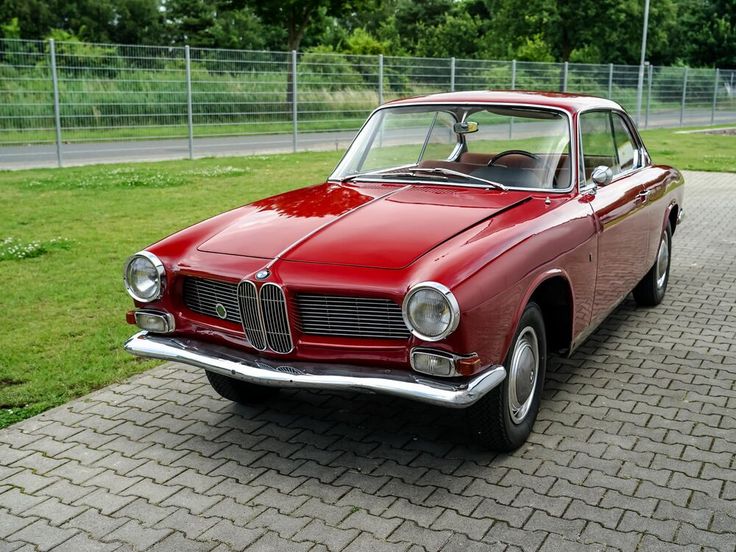
When BMW introduced the 4 Series in 2013, it incorporated design elements that paid homage to the classic 3200 CS. The distinctive kidney grille and flowing roofline echo the past while embracing current design language.
Car makers aren’t simply copying old designs. They’re reinterpreting them with updated proportions, materials, and features that meet today’s safety and efficiency standards.
Modern Interpretations of Historic Designs
Designers now skillfully blend heritage elements with forward-thinking approaches. The BMW New Class from the 1960s established design principles that continue to influence the brand’s identity today.
Modern BMWs maintain the driver-focused cockpit and clean lines first seen in the New Class models. However, they incorporate these elements with contemporary touches like digital displays and advanced lighting systems.
Heritage-inspired design isn’t about nostalgia alone. It’s a strategic approach that helps brands:
- Maintain visual continuity across generations
- Leverage emotional connections with consumers
- Differentiate products in a crowded market
This approach creates designs that transcend time, offering both familiarity and innovation. Successful heritage designs don’t simply copy the past; they interpret historic elements through a modern lens.
Design Elements Defining Brand Identity

Automakers use distinctive visual elements to set their vehicles apart in the market. These signature design features help consumers instantly recognize a brand and associate it with specific qualities.
The Kidney Grille: A BMW Icon
The kidney grille stands as BMW’s most recognizable design element, dating back to the 1933 BMW 303. This distinctive front-end feature has evolved while maintaining its fundamental shape across nine decades.
In recent years, BMW has made bold choices with the kidney grille. The BMW 4 Series introduced in 2020 featured a dramatically enlarged vertical grille that sparked intense debate among enthusiasts and designers alike.
The kidney grille serves both practical and brand functions. It provides necessary airflow to the engine while instantly communicating “BMW” to viewers, even from a distance or in silhouette.
Sportiness and Performance in Design Cues
Automotive brands use specific design elements to convey performance capabilities through visual language. These performance cues create immediate associations with driving dynamics.
Hood scoops, side vents, and pronounced wheel arches all signal aerodynamic functionality while creating a sense of motion even when vehicles are stationary. Manufacturers like BMW and Porsche employ low, wide stances to communicate stability at high speeds.
Exhaust treatments have become increasingly important performance signifiers. Quad exhausts, visible diffusers, and integrated spoilers tell viewers about a vehicle’s sporting intentions before the engine starts.
Color also plays a crucial role, with certain shades becoming synonymous with performance models – Ferrari red, BMW M division’s blue accents, and Mercedes-AMG’s distinctive yellow trim elements.
Ergonomics and Aesthetics in Interior Design

Car interiors have transformed dramatically over the decades, balancing both comfort and style. Designers constantly work to create spaces that are both functional and visually appealing.
In early automobiles, interiors were basic with little thought for comfort. Seats were flat and firm, and controls were placed wherever they fit rather than where they made sense for drivers.
The 1950s and 60s saw a shift toward more stylish cabins. Bold colors, chrome accents, and bench seats defined this era when car interior design was more about flash than function.
By the 1980s, ergonomics began taking center stage. Designers focused on placing controls within easy reach and creating seats that offered better support for long drives.
Key Interior Design Elements That Evolved:
- Seating comfort and adjustability
- Dashboard layout and instrument visibility
- Control placement and intuitive operation
- Storage solutions and space utilization
Modern automotive design now combines advanced ergonomics with aesthetic appeal. Touch screens have replaced many physical buttons, while ambient lighting creates mood and highlights interior shapes.
Today’s designers use a blend of science and art to create cabins. They study human body measurements and movement patterns to ensure every switch, knob, and surface is perfectly positioned.
Materials have also evolved from basic cloth and vinyl to premium leathers, sustainable fabrics, and high-tech composites that combine beauty with durability.
The Impact of Regulations on Car Design

Safety and environmental regulations have dramatically shaped car design throughout history. What we see on roads today reflects not just style preferences, but strict legal requirements that automakers must follow.
In the 1960s and 1970s, safety became a major concern. This led to the addition of features like padded dashboards, seat belts, and crumple zones. These safety elements changed how designers approached their work.
Key Safety Regulations Affecting Design:
- Bumper height requirements
- Crash test standards
- Rollover protection
- Airbag mandates
- Pedestrian safety features
Environmental concerns brought another wave of design changes. Fuel economy standards forced automakers to create lighter, more aerodynamic vehicles with better efficiency.
The 1970s oil crisis pushed this trend further, leading to smaller cars with improved streamlined shapes. Big chrome bumpers disappeared, replaced by integrated plastic ones that improved airflow.
Emissions regulations required catalytic converters and modified engine compartments. These technical requirements limited some design possibilities while creating opportunities for others.
Modern automotive design now embraces these regulations as creative challenges. Designers work with engineers to create cars that meet legal requirements while maintaining brand identity and aesthetic appeal.
Regional differences in regulations also create interesting variations. European pedestrian safety rules, for example, require higher hoods than American standards, creating distinct regional styling cues.
The Future of Car Design: Predicting the Next Big Shift

Car design is heading toward a dramatic transformation in the coming decade. Electric vehicles are pushing designers to rethink traditional layouts since they don’t need large engine compartments.
Cars will likely become more spacious inside with innovative storage solutions as traditional design constraints disappear. This shift allows for more creative freedom with interior spaces.
Minimalism appears to be gaining momentum in exterior styling. Many experts predict that future cars will feature cleaner lines and fewer details, moving away from the aggressive styling common today.
Autonomous technology will significantly impact design. As self-driving capabilities advance, steering wheels might become optional or retractable, changing century-old interior layouts.
The next generation of vehicles is expected to be highly connected. Cars will integrate seamlessly with other devices and infrastructure, featuring augmented reality displays and intuitive interfaces.
Luxury brands are already exploring these concepts. They’re blending technology with evolving consumer preferences for sustainability and personalization.
AI-generated visualizations suggest cars will look dramatically different at various points in the future:
- 10 years: Sleeker EVs with advanced tech
- 25 years: Significantly altered proportions
- 50 years: Potentially unrecognizable compared to today’s vehicles
These changes represent the most significant shift in automotive design since the early 20th century.
Frequently Asked Questions

Car design has transformed dramatically over the decades, with each era sporting distinctive features that reflect cultural shifts, technological advances, and changing consumer preferences. The following questions address the most common inquiries about automotive design evolution.
What are the defining car design features of each decade?
The 1950s embraced chrome accents, long bodies, and big tailfins that symbolized Space Age ambition and accessible luxury. These extravagant design elements defined post-war optimism.
The 1960s saw sleeker profiles with muscle cars dominating American roads while European sports cars favored compact elegance. This decade balanced performance with style.
The 1970s brought wedge-shaped designs and angular lines responding to fuel efficiency concerns. Cars became more practical but maintained distinctive character.
In the 1980s, boxy shapes and sharp angles prevailed with an emphasis on aerodynamics. Digital dashboards and plastic body cladding marked this tech-forward era.
The 1990s introduced smoother, rounder silhouettes as car designers incorporated sleek, rounded lines to reduce wind resistance and improve fuel economy.
Which cars are considered the most iconic in each era of automotive history?
The 1950s celebrated the Chevrolet Bel Air, Ford Thunderbird, and Cadillac Eldorado as defining vehicles of their time. These models perfectly captured mid-century automotive exuberance.
The 1960s elevated the Ford Mustang, Jaguar E-Type, and Chevrolet Corvette Stingray to legendary status. Their timeless designs continue to influence modern vehicles.
The 1970s featured the Lamborghini Countach, BMW 2002, and Porsche 911 Turbo as standout designs that pushed boundaries and established new performance benchmarks.
The 1980s showcased the Ferrari Testarossa, DeLorean DMC-12, and BMW M3 as cultural icons that appeared in movies and television shows of the era.
The 1990s introduced the Mazda Miata, McLaren F1, and Dodge Viper as distinctive designs that combined innovation with driver-focused experiences.
How did automobile design evolve from its inception to the present?
Early automobile design (1880s-1920s) focused on function over form, with horse carriage-inspired vehicles dominated by exposed mechanics. Safety and comfort were secondary concerns.
The 1930s marked a significant shift toward elegance and streamlining, as car bodies became more integrated and aerodynamic principles emerged.
Post-war design (1940s-1950s) embraced optimism with decorative elements, bright colors, and aircraft-inspired features reflecting societal prosperity.
The oil crisis of the 1970s forced designers to prioritize efficiency, while computerization in the 1980s and 1990s enabled more complex shapes and integrated systems.
Modern design balances aerodynamics, safety regulations, technology integration, and brand identity while increasingly incorporating sustainability principles.
In which era is the ‘golden age’ of car design generally recognized?
Many enthusiasts consider the 1950s to 1960s the true golden age of automotive design, when artistic expression reached its peak without excessive regulatory constraints.
The post-war economic boom enabled automotive designers to experiment with flamboyant styling elements while incorporating new technologies and materials.
The late 1960s also receives significant recognition for balancing beautiful aesthetics with performance engineering, especially in European sports cars and American muscle cars.
Some experts argue that the pre-war period of the 1930s deserves golden age status for its coachbuilt luxury vehicles and the birth of streamlining principles.
What are the characteristics that distinguish classic car eras?
Pre-war classics (before 1945) feature separate fenders, running boards, vertical grilles, and ornate details that reflect their transition from horseless carriages.
The chrome era (1950s) showcases extensive brightwork, two-tone paint jobs, wraparound windshields, and jet-age influences like tailfins and rocket motifs.
Muscle car era vehicles (1960s-early 1970s) display powerful engines, performance-oriented styling, aggressive hood scoops, and wide stance proportions.
The malaise era (mid-1970s to early 1980s) shows compromised designs with large bumpers, reduced power, and styling adjustments to meet new regulations.
Modern classics (1980s-1990s) feature sharper geometries transitioning to aerodynamic forms, hidden headlights, and increasing use of plastic components.
Which decade in automotive history is often viewed as having the least favorable designs?
The mid-1970s through early 1980s is frequently criticized for producing vehicles with compromised aesthetics due to stringent emissions and safety regulations.
This period saw previously powerful muscle cars neutered by performance restrictions, while designs were hampered by large, ungainly bumpers and reduced styling freedom.
Economic pressures and fuel shortages forced manufacturers to rapidly downsize vehicles, often resulting in awkward proportions and underpowered engines.
American manufacturers particularly struggled during this time, with many models receiving hasty redesigns that prioritized compliance over coherent styling.
However, this challenging period also spurred innovations in efficiency and aerodynamics that would eventually lead to more sophisticated designs in later decades.
